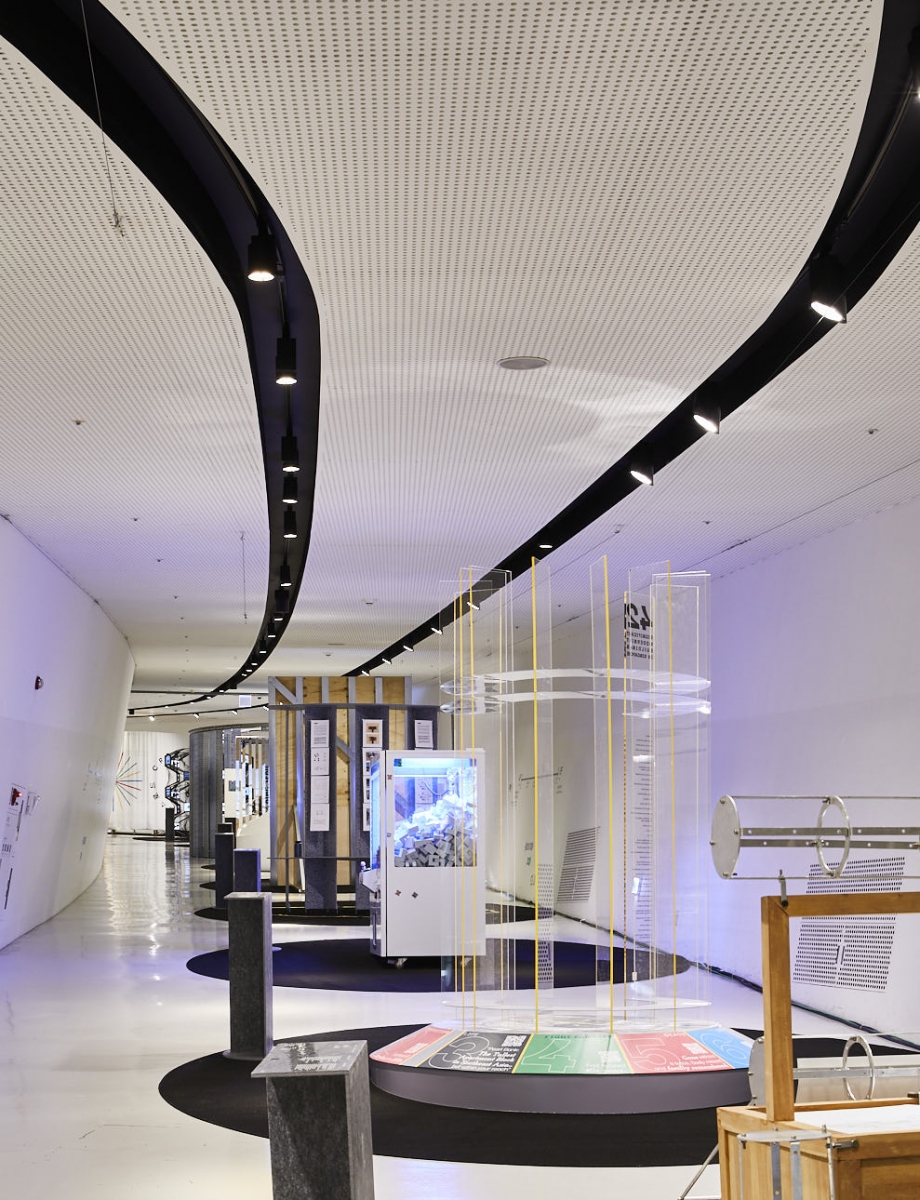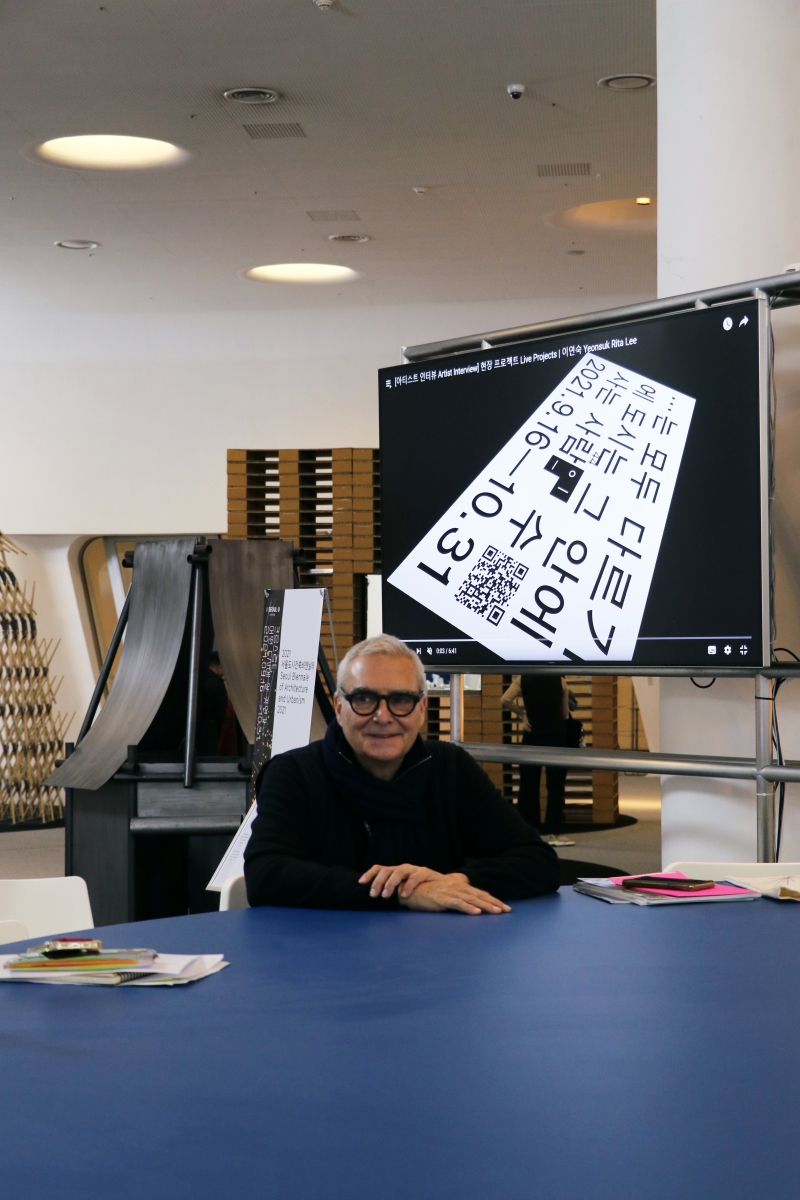
ⓒKim Yeram
On the 31st of October, the Seoul Biennale of Architecture and Urbanism 2021 (SBAU 2021), celebrating its third anniversary, concluded its 46-day-long journey. Following ‘Imminent Commons’ (2017) and ‘Collective City’ (2019), the theme of 2021 is ‘CROSSROADS Building the Resilient City’. By crossing five pairs of contrasting concepts – Above and Below, Heritage and Modern, Craft and Digital, Natural and Artificial, and Safe and Risk – it sought explications of the complex relationships that form our modern cities and answers to the contemporary questions faced by mankind. SPACE met with the general director Dominique Perrault, who visited Korea for the closing ceremony of the Biennale, and talked about SBAU 2021 and Seoul.
interview Dominique Perrault principal, Domonique Perrault Architecture × Choi Eunhwa
Choi Eunhwa (Choi): Even in 2019, when you were selected as the general director of SBAU 2021, a global pandemic was beyond our imaginations. Even so, the theme of the Biennale, ‘CROSSROADS Building the Resilient City’ is intimately connected to our present situation. What did you consider when deciding how best to reflect our present global circumstances in the selection and development of the theme?
Dominique Perrault (Perrault): The theme was decided before the outbreak of the pandemic. At the end of 2019, I set the direction for this Biennale as ‘CROSSROADS’. As we came to experience the pandemic, which began shortly after this decision, I decided to add the subtitle ‘Building the Resilient City’. I focused on our current, common situation— that we have no choice but to learn the importance of ‘resilience’ and the pervasive need for ‘a resilient city’.
Choi: What is the resilience? What is a resilient city?
Perrault: If you look at the original definition of the word resilience, it means the capacity and ability to overcome challenges and to stand up again after experiencing a major shock or accident. The resilient city is the same. For instance, resilience is the ability for a city to stand up and be rebuilt and restructured after an earthquake, fire, or flood. However, when we speak of a resilient city, we need to consider not only its ability to deal with misfortune or the legacy of its past but also our ability to foresee obstacles. Therefore, we have to mobilise all the data we can generate about the city to estimate how urban structures can and should evolve and how we can prevent greater risks. Other than natural disasters, cities also face a diverse range of problems, such as immigration and mobility. For example, in Seoul, many people spend a lot of time commuting home and work. Recognising large and small obstacles in cities, seeking solutions, and predicting future challenges are all included in the concept of ‘a resilient city’.
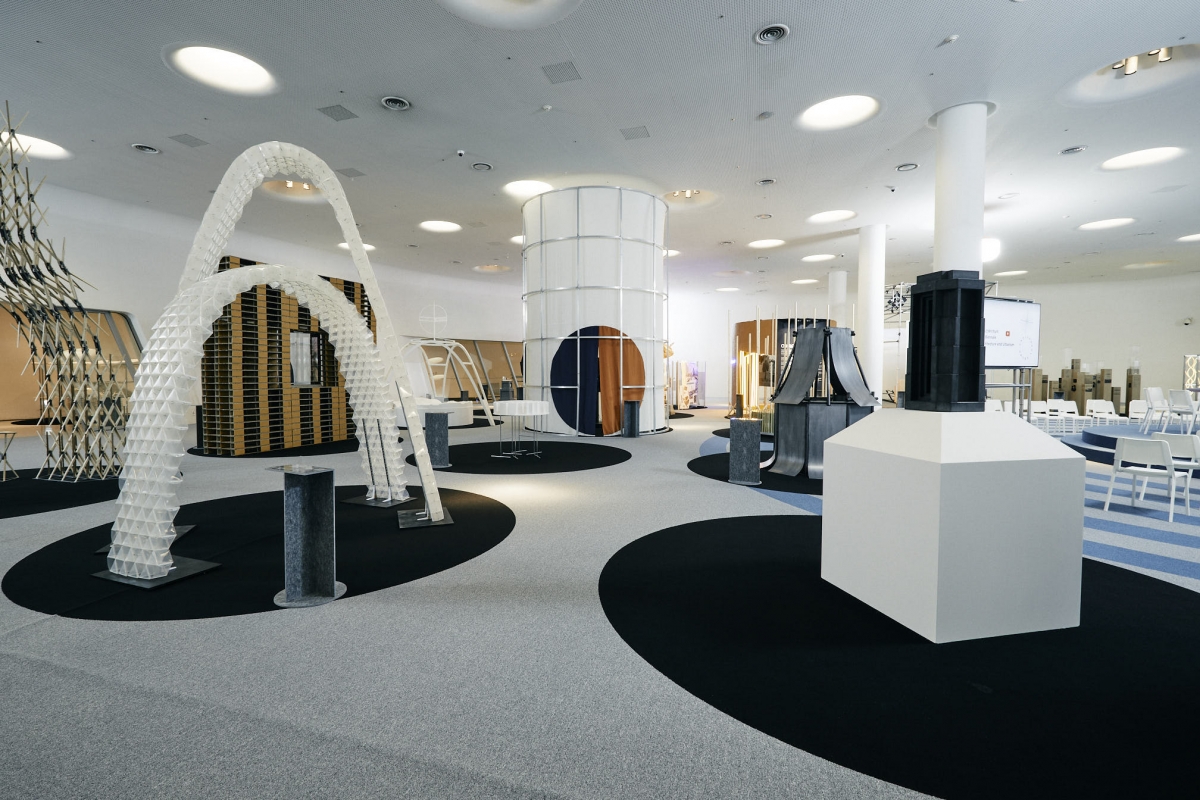
Choi: You prepared for the Biennale while in Paris, France. How did you establish effective communication between the two cities, Seoul and Paris?
Perrault: There was nothing new here, communicating as we typically do with global partners. I worked for over twenty years on projects in Seoul, and, in some ways, I have already been trained in long-distance communication. We engaged in a lot of video conferences while preparing for the Biennale. We met face to face almost every day. I believe this Biennale was possible because the Seoul Metropolitan Government, curators, and artists were in constant contact.
Choi: SBAU 2021 came to an end on the 31st of October. Could you tell us your thoughts on the event?
Perrault: As many elements took place online, I was worried at first; whether we would be able to send a strong enough signal to attract people. Yet, once the opening ceremony was held online and offline, we saw many people from Seoul and all over the world attend the Biennale. Even if it only lasted for six weeks, shorter than the first and second Biennales that had terms of about three months, it received the highest number of visitors. I believe it has achieved good results, not in terms of quantity but also quality. There were about 200 works displayed in this Biennale, and about 50 of them were of a very high standard. These works present innovative proposals and solutions that can make intelligent interventions in cities, both politically and responsibly. ‘Politically’ here means making interventions that allow citizens to trust the city and to live in it safely. If you look at these works, they realise the desired level of comfort and individuality.
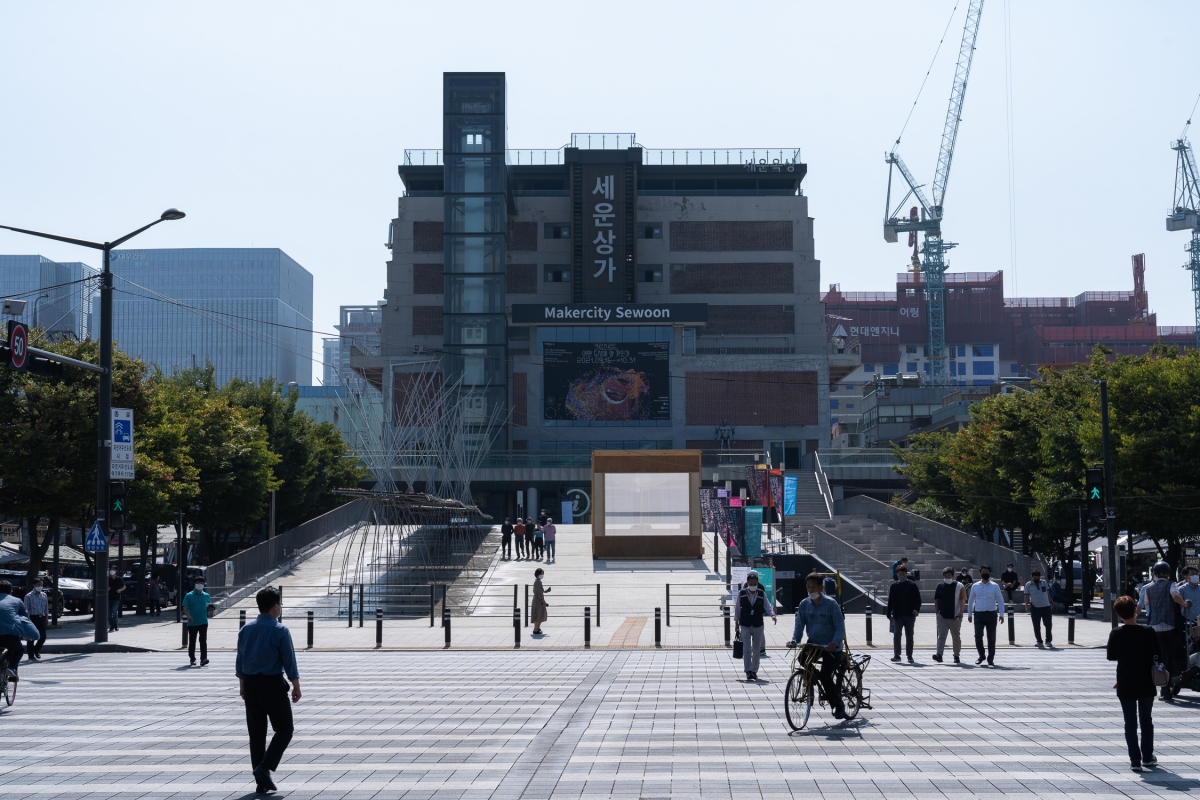
Choi: A new element has been introduced this time: an award. A total of fourteen works were selected, including the ‘Memorial to the Industrial Revolution’ jointly proposed by CSK Architects + The Bartlett UCL + Arup. What was the reason behind introducing the award?
Perrault: We originally planned a means of awarding prizes such as a grand prize and special prize in sequence, like the Oscars or at Cannes. In most Biennales held throughout the world, a jury committee is established and they award a single work the grand prize. However, this could not be realised at this Biennale. Members of the academic committee could not come to Korea, and so they could not come to the exhibition hall and see the work in person. Therefore, unfortunately, we replaced this approach by nominating 14 works. I wanted to show that the Biennale would be open to the outside world, and express the high-quality and diversity of our displayed works. I believe it will send a message that demonstrates how powerful the commitment of these architects is to the city and to its environment, and communicate the state of mind of our architects towards those living in large cities.
Choi: If the Biennale has been a meaningful place in which to exchange ideas and experiences, it seems that it will be necessary to think about its new formats and possible roles in the future. What new shape should the Biennale take in a world altered by the pandemic, of non-contact and a new normal?
Perrault: SBAU 2021 offered a chance to experiment with various ideas. Many things, beginning with the planning of the Biennale, were had to proceed through non-face-to-face and remote methods. However, not everything could be performed or worked on remotely. Due to logistics and cost issues, there were some cases in which works had to be manufactured and installed on-site. I believe it is time for us to think about what to do with the ‘legacies’ of this Biennale, and how to reuse and recycle them these works and traces. The most visible example is that there are some installation works that cannot be returned to their native countries due to transportation issues, and it is necessary to think about how best to handle them. This problem has been experienced not only by Biennales but also in other national events such as the Olympics. When a large-scale event is held in a country, most of the work is performed locally and returned to the local area. Isn’t that what sustainability and resilience are all about?
Choi: What does the ‘legacy’ of the Biennale encompass?
Perrault: Everything from the works installed for the exhibition, the research that the architect conducted to create a single work, the references that were referred to, and the process of developing an idea more specifically—all of this is the Biennale’s legacy and heritage points.
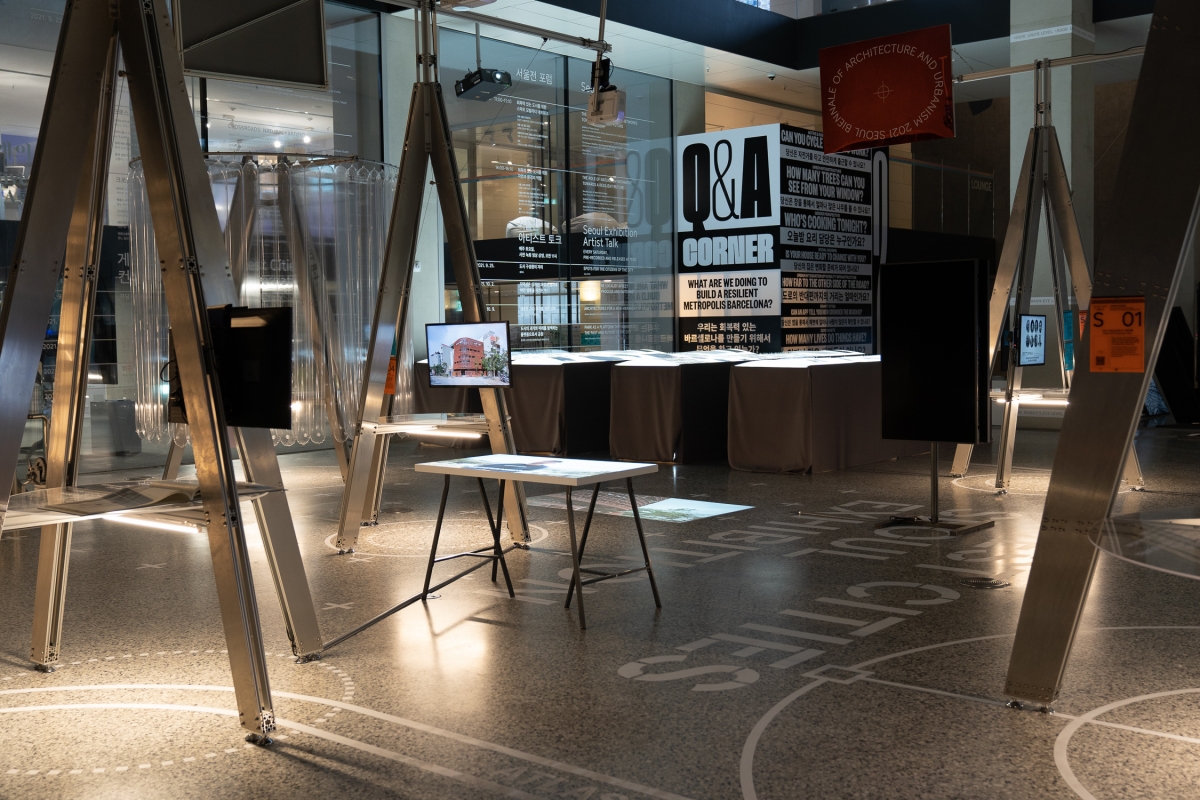
Choi: I would like to move on to a question about Seoul. It has been more than 20 years since you marked the beginning of your relationship with Seoul. While paying several visits to Seoul, how did you perceive the city of Seoul and the changes over time to this city?
Perrault: Previously, an old and existing project would be easily removed to build a new one, but now it seems that there are many cases that preserve an old structure to make it into a visible example of the city’s architectural culture. We used to wipe out a neighbourhood and build a new building on that site, but now there seems to be a growing number of opposing attitudes. It has become crucial to try to preserve a building that has stood on a site for a long time, to try to reinterpret it, and to add a modern building. As such, the characteristics and history of a neighbourhood is set and defined, and the people who live there feel a sense of true belonging and settle down. Making intelligent interventions in the modern era while preserving existing structures has become, in a way, a new urban culture. One of the five sub-themes of this Biennale was ‘heritage’ and the ‘modern’. If we once lived in a world where two concepts were opposed, we now live in a world where they coexist.
Choi: You are presently working on the Gangnam Intermodal Transit Center, and you have promoted many projects that actively use the underground space. In your opinion, what is the potential and strength of underground space?
Perrault: Today, all of a city’s infrastructure is located underground. Since all the water and sewage facilities, electric power facilities, underground parking lots, and subways are located here, the underground can be considered as a space for the resources of the city. In a way, it could be said that engineering occupies the underground space. A modern city takes the form of spreading in a lateral direction like a blob of oil spilled into the sea, and when we need to block it and protect nature, the underground is flooded with potential. The idea is to increase underground activities, raise density, and introduce new uses. So, ultimately, it aims to link the underground and the aboveground. I am not saying let’s live in these underground spaces. I believe that, when we perceive the underground anew, it will open up other possibilities for us.
